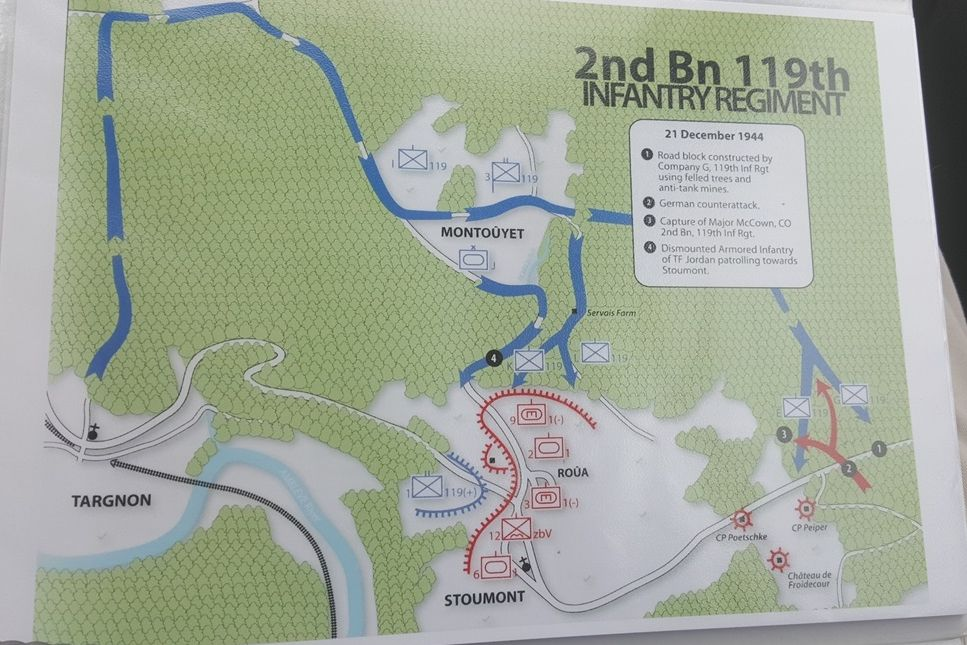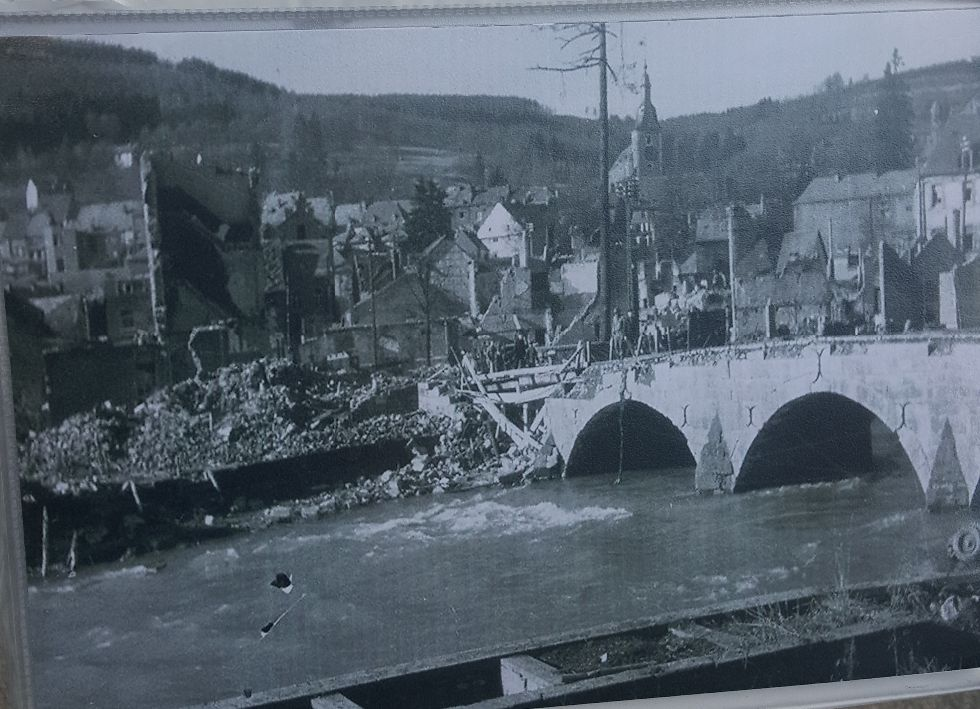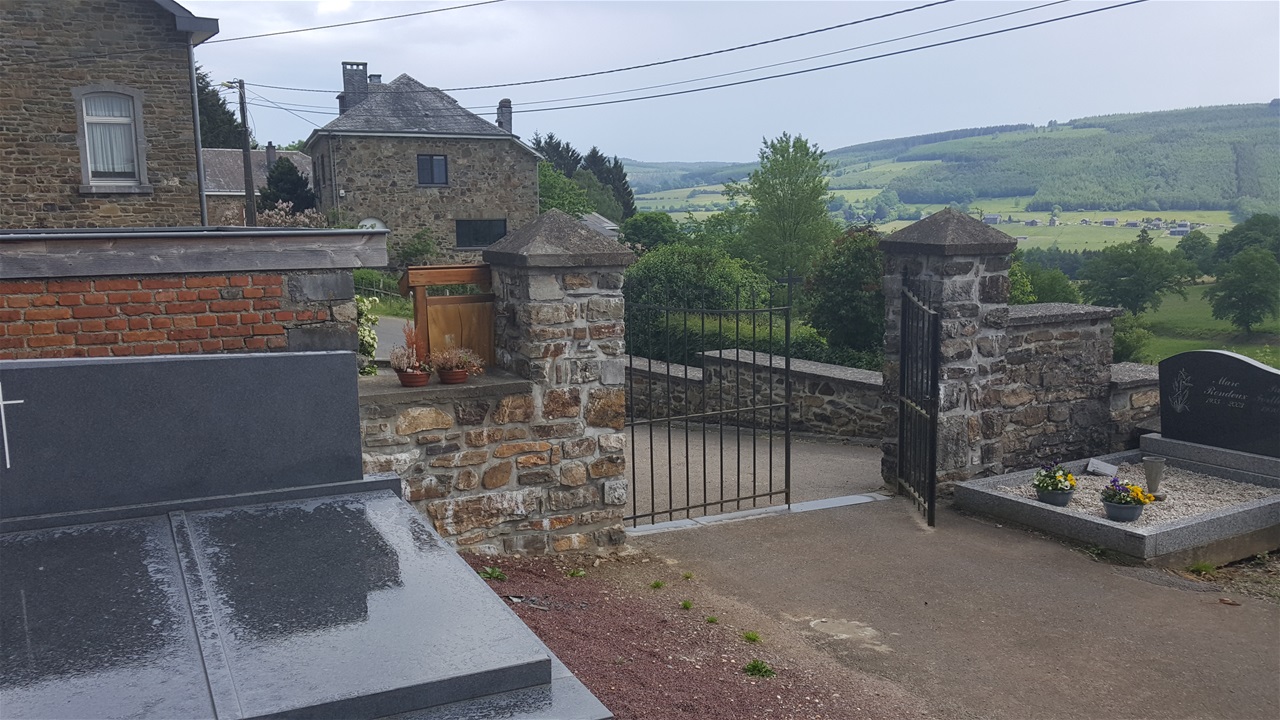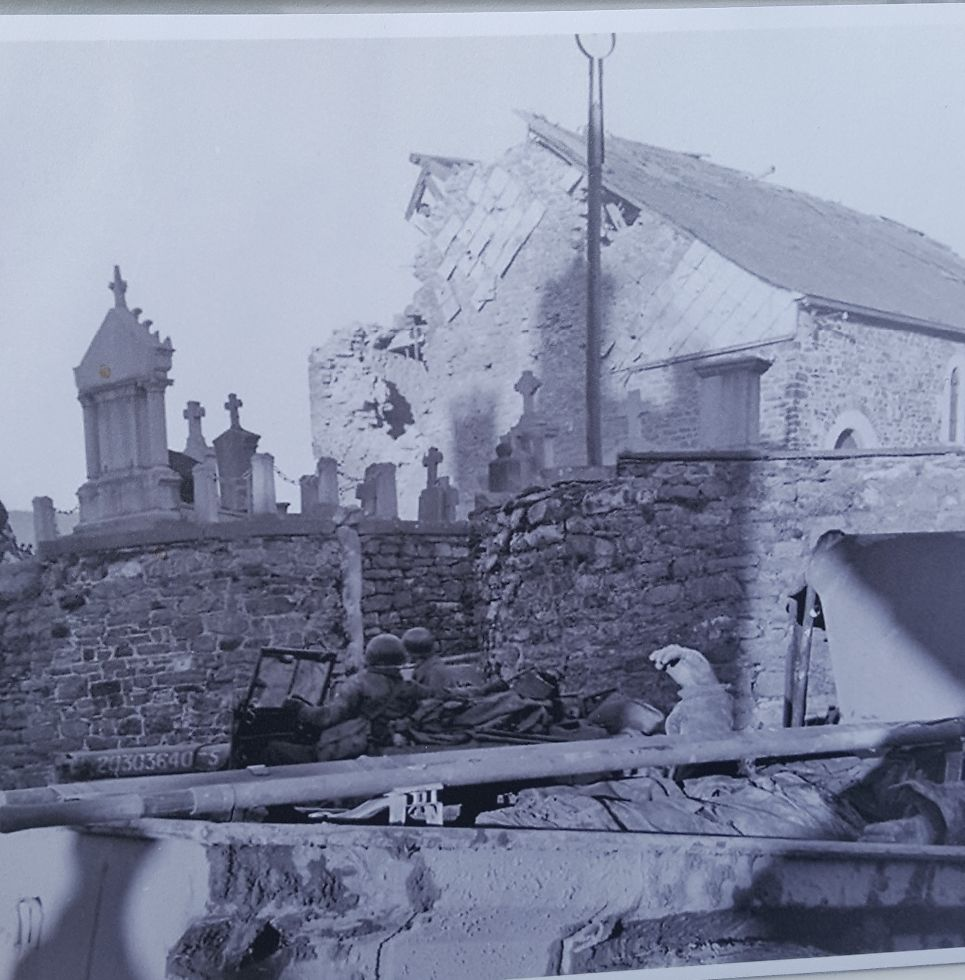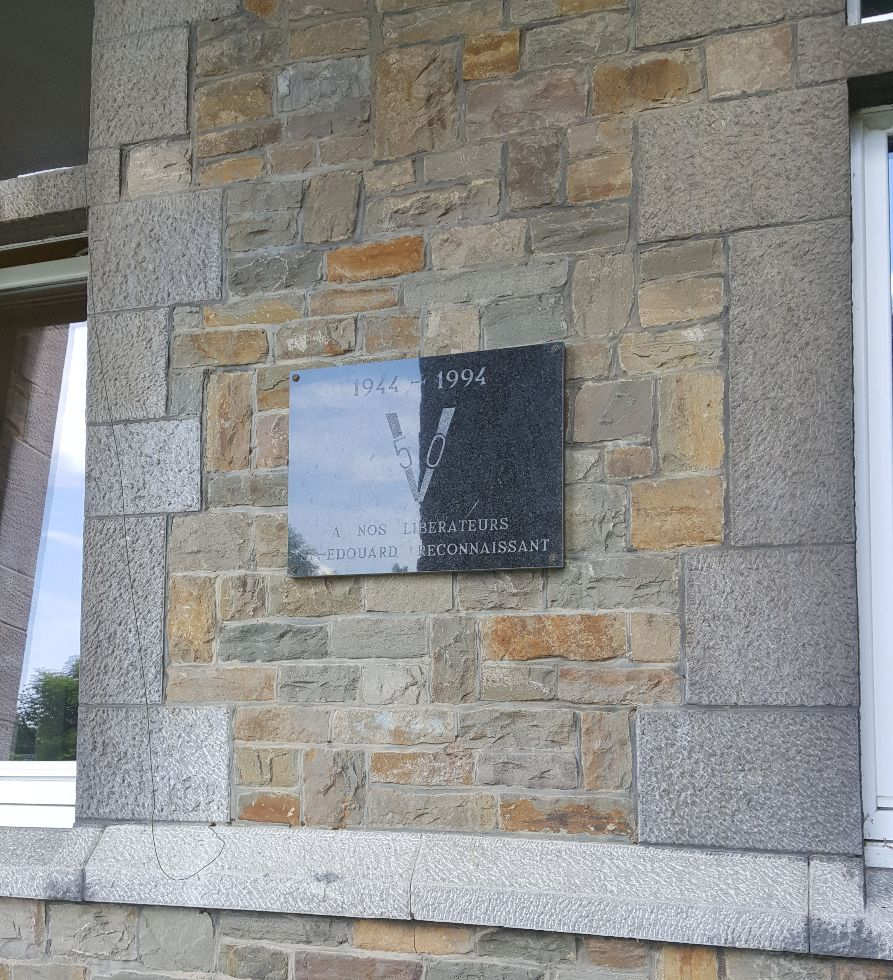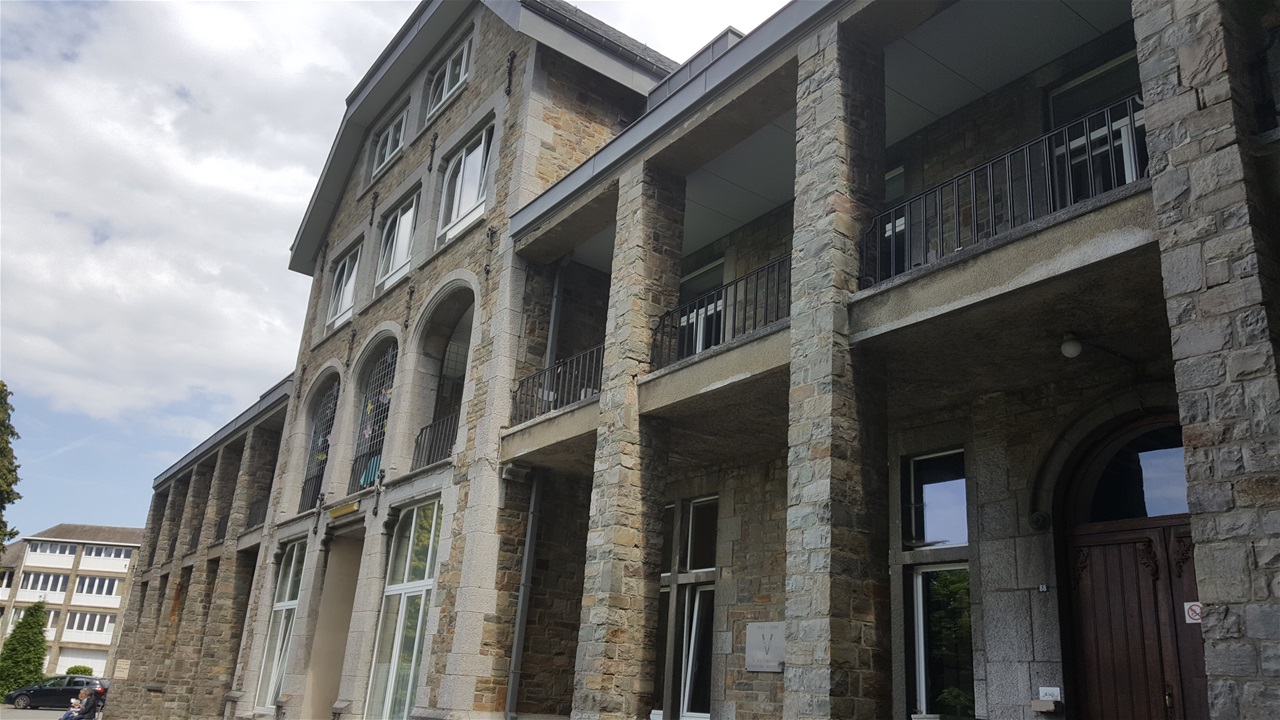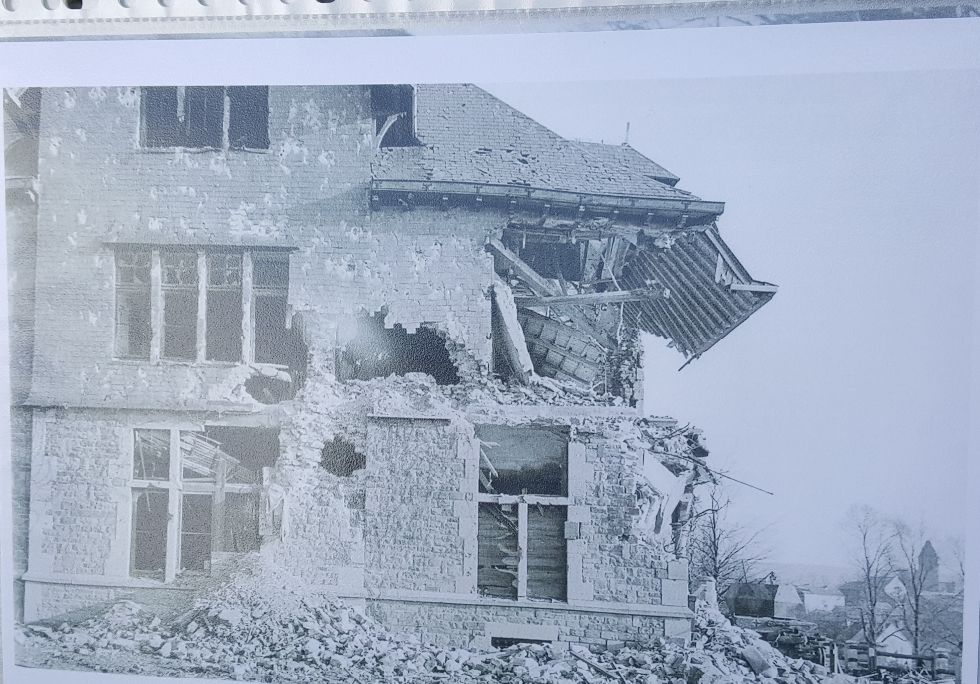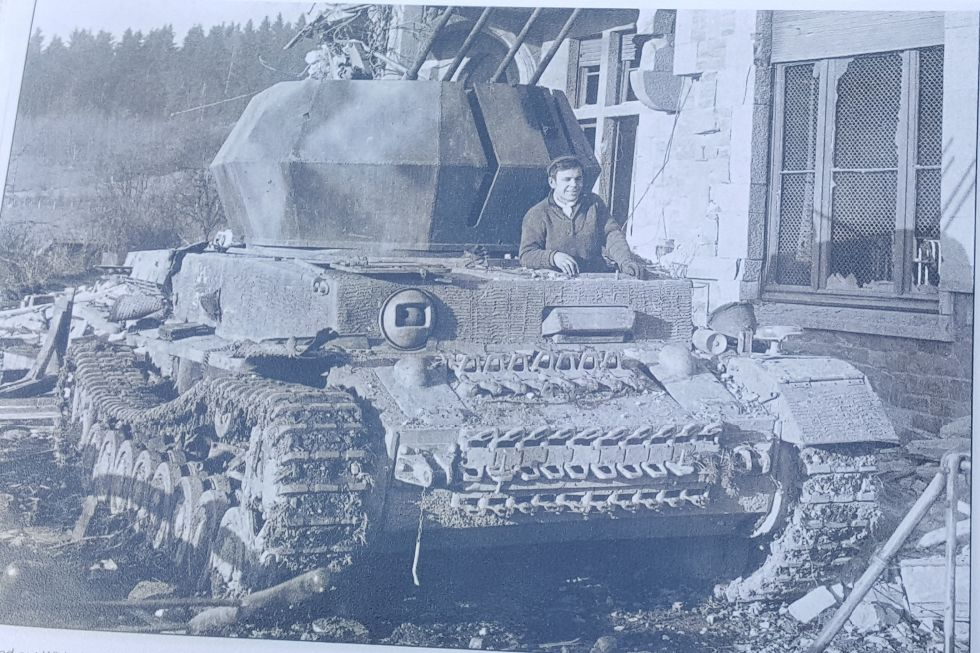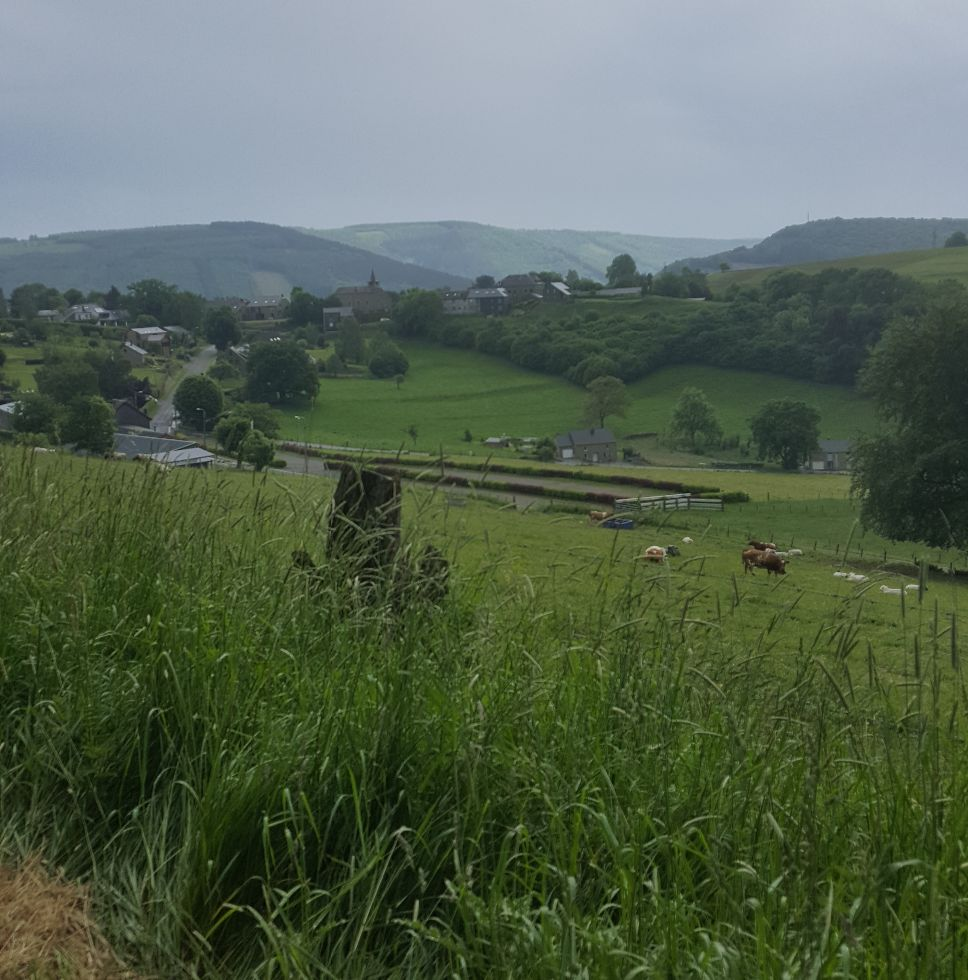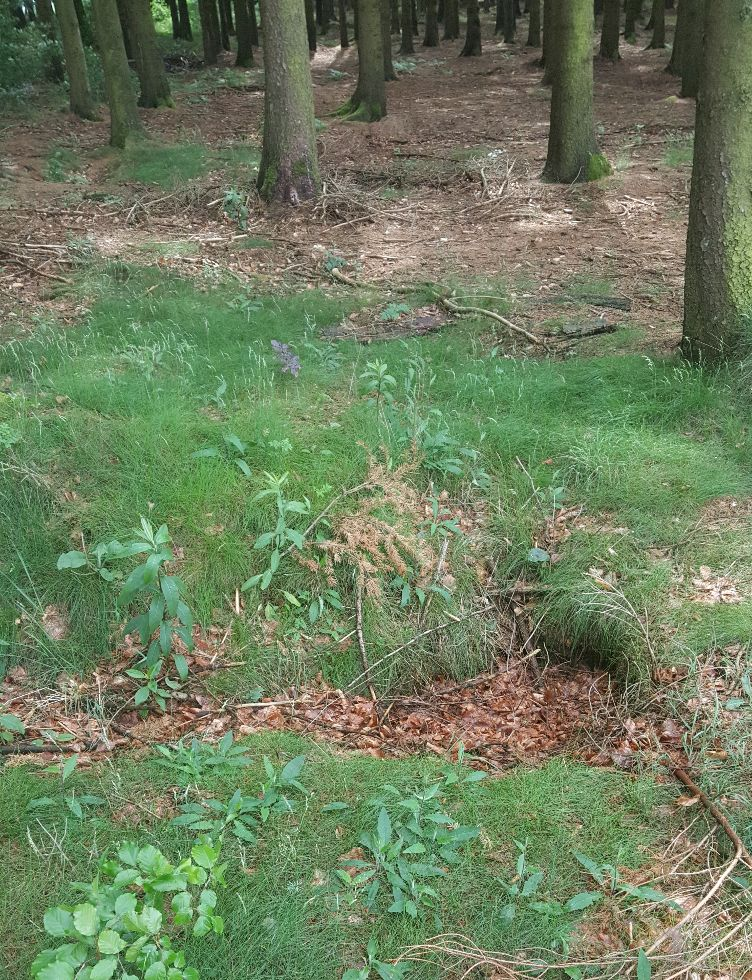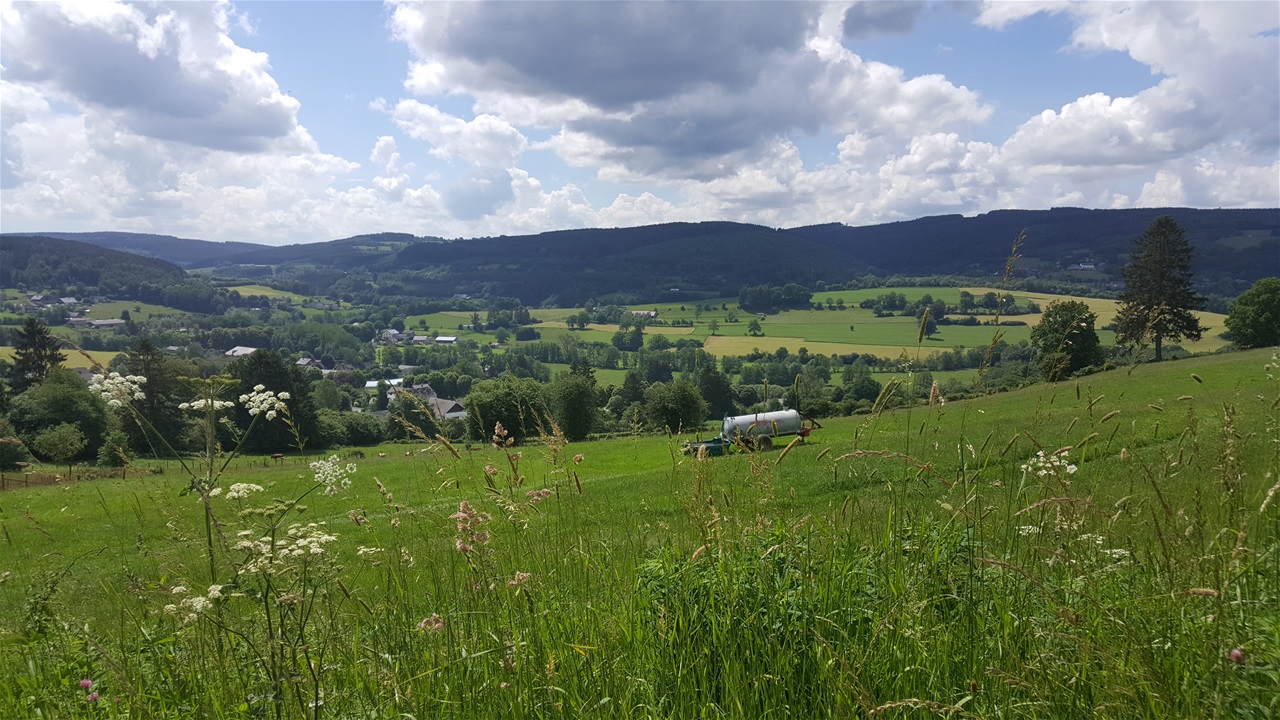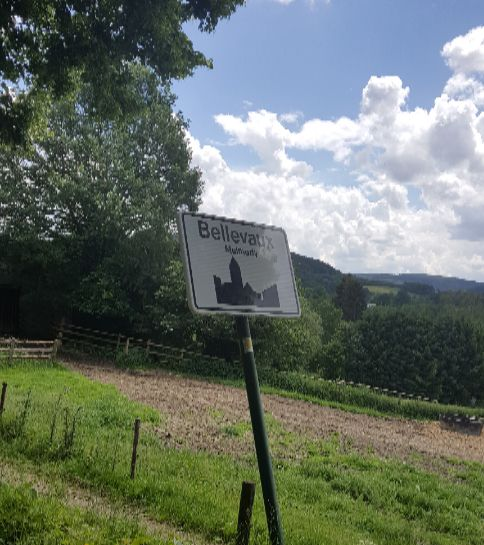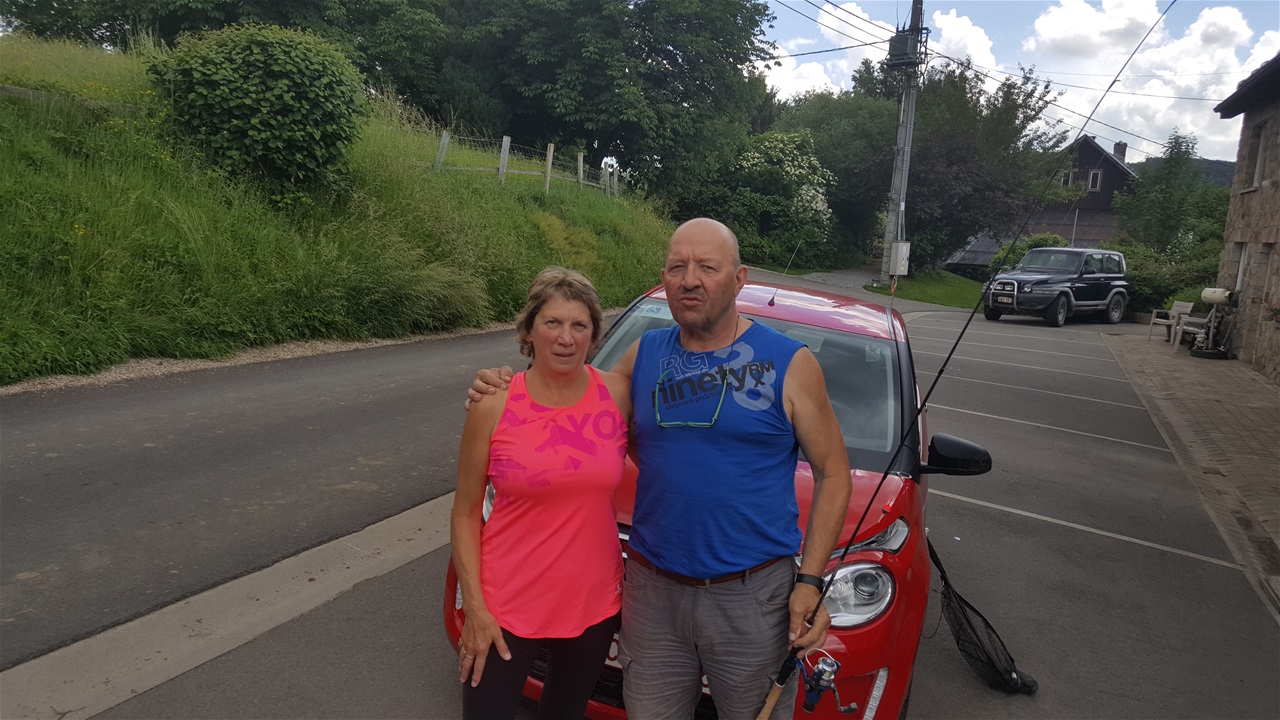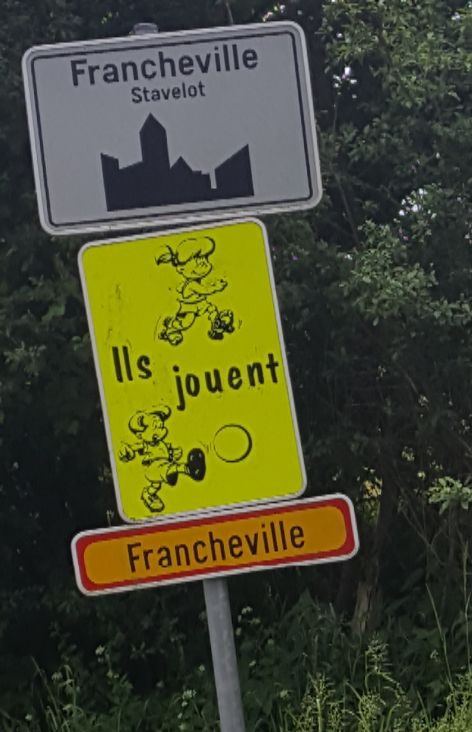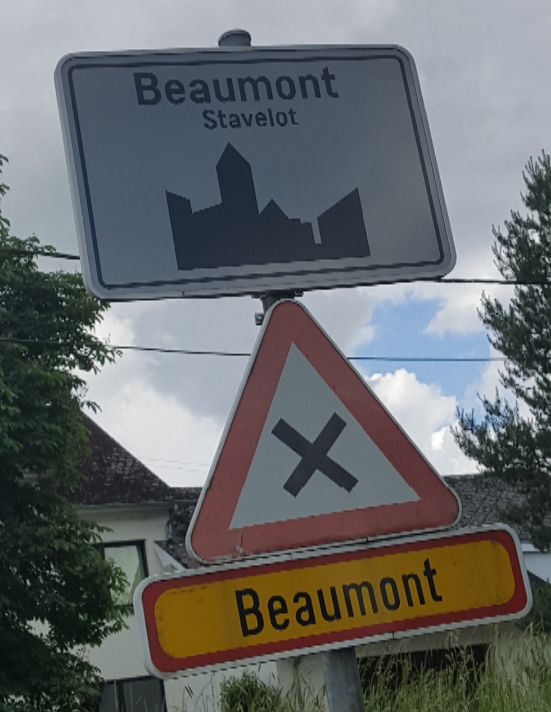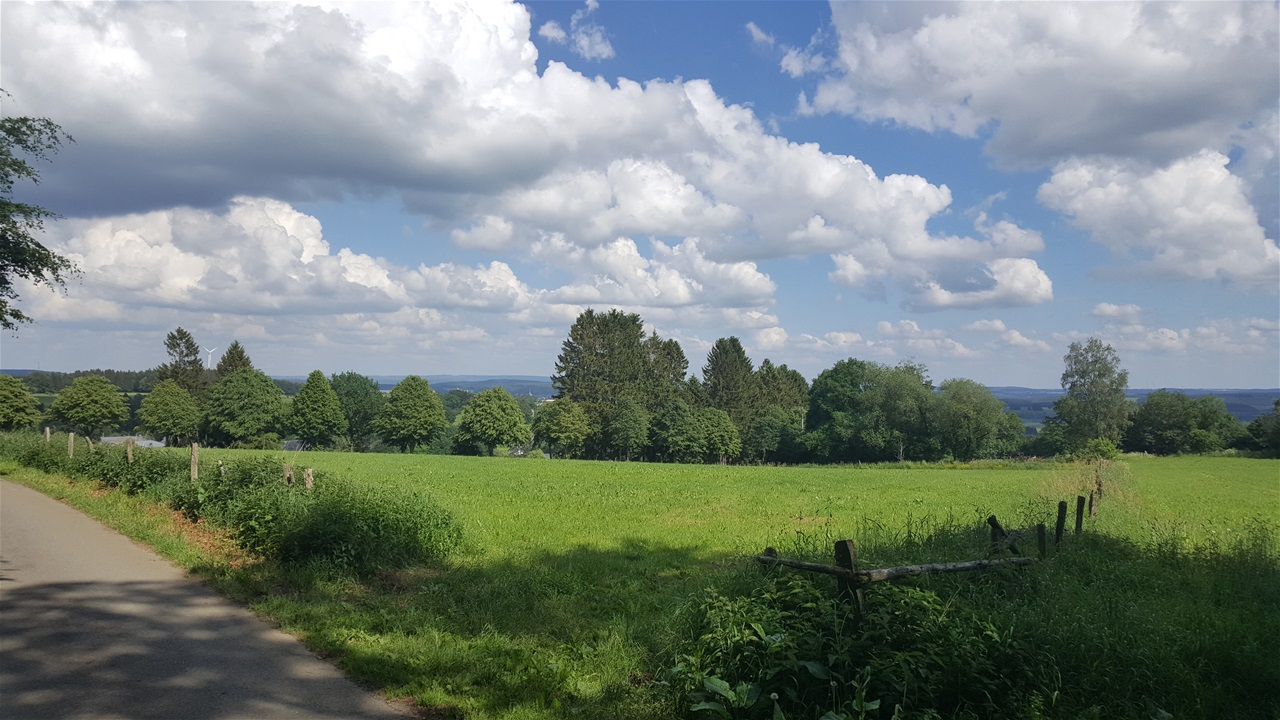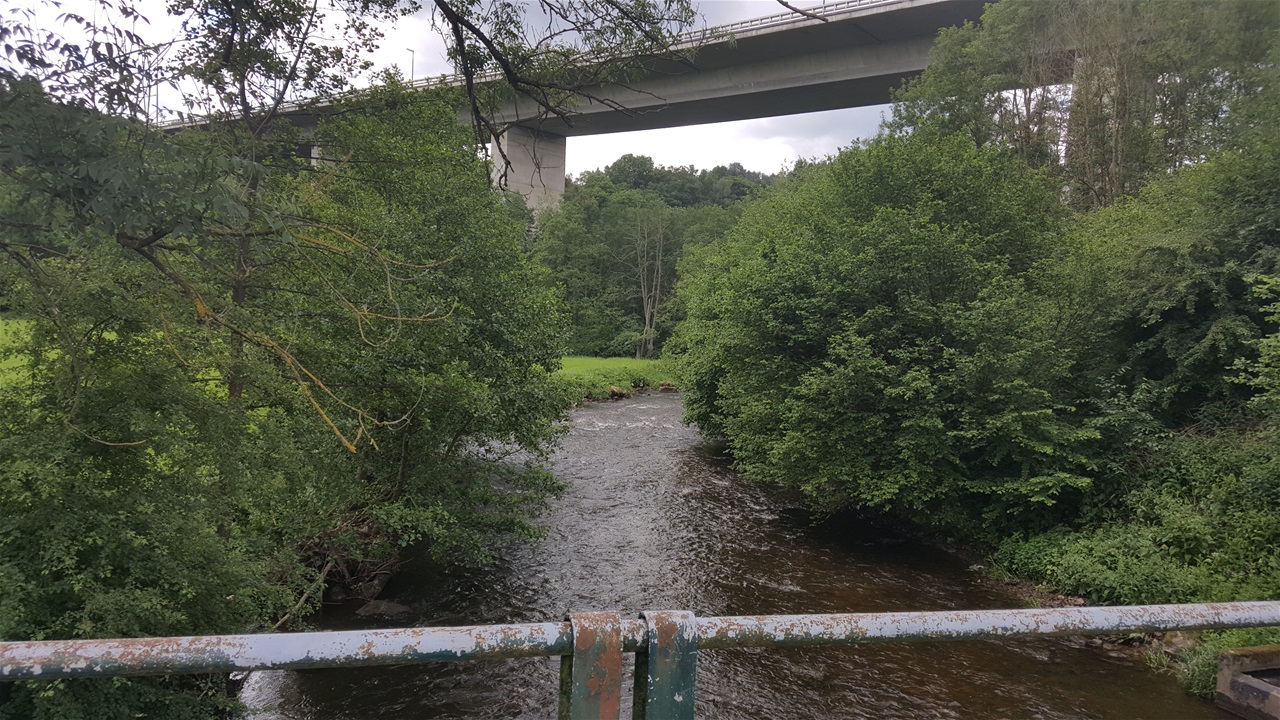On December 16, 1944, the German army unleashed an attack in the Ardennes Forest in Belgium that resulted in the largest battle ever fought by the US Army. Over 500,000 German infantry, with heavy tanks and vehicles, were secretly assembled on the Belgian frontier. The attack was coordinated along 5 corridors, with the northern corridor commanded by a famous German tank leader Jochaim Peiper. His column was over 15 miles long, with the best of the German tank corps, the Panzer 1st SS Division. This Division was Hitler's best trained soldiers and tankers. Peiper was a young, handsome and ruthless leader.
In mid December, the 30th Division was recovering after the major battles of Aachen and the Roer Plain in November. When the Americans realized the scope of the German offensive, most of the available units were called in to stop the Germans. The 30th was trucked over two days to the Stoumount/Stavelot/LaGleize area to meet the oncoming German army. They passed by many civilians and soldiers that were fleeing the oncoming fight, as they were going in.
Ultimately, after days of heavy fighting, the Germans were repulsed, with their farthest drive stopped at Stoumont Station. The Germans called this area "The Cauldron" because of the fierce fighting and the US artillery that made their life miserable. Bridges were blown in the German's face and they couldn't find the gasoline they needed to continue.
Dad's unit, the 119th, 2nd Battalion, fought at Stoumont in December to make the final stand against Peiper's 1st SS Panzers. On a map below, was one day of the fight, where the 2nd was assigned to go behind the lead column and cut off their supplies and retreat. As the 2nd Battalion's commander, Major Hal McCown was reconnoitering an area on the morning of December 21st, he was captured. His story is famous among the Battle of the Bulge stories as he had a midnight conversation with Jochaim Peiper about the reasons they went to war. McCown escaped and rejoined the 119th after Christmas.
We saw the exact place (or nearly so) where McCown was captured. There also was what looked like a foxhole there.
I am confident that Dad reported to Major McCown and likely knew him personally.
Plaque at a sanitarium at Stoumount recognizing the 30th Division and the hard fighting that occured here. The building was the scene of concentrated action, including room to room fighting. The building changed hands several times. One of Dad's brother Battalions, the 117th, saw heavy action here and was decorated for their heroism.
In several areas, we were able to see foxholes that remain from WWII. The foxhole was a defensive staple of WWII, protecting men from machine guns, mortars and artillery. Dad likely spent a good amount of time in one.
This is a foxhole outside of Foy, near Bastogne (on the southern shoulder). With our guide on the northern shoulder, we were able to find the place where Major McCown was captured. There was a foxhole similar to this there. As a side note, I remember Dad saying how important foxholes were - they were one of the great defensive inventions used in WW2.
After the Germans were stopped in Stoumont, a signicant army still remained to fight in the Ardennes. The weather remained extremely cold and it started to snow heavily in January 1945. Dad's unit fought a major battle outside of Malmedy in January. Malmedy was the site of a massacre of nearly 100 American soldiers in December, an act that spread like wildfire through the American troops, hardening their resolve to win battles and not be taken prisoner. Below are several towns that were taken by the 119th in January.
After the war was over, Jochaim Peiper was tried for war crimes. Major McCown testified in favor of the actions of Jochaim Peiper during his Nuremburg trial. Peiper was accused of allowing or ordering the killing of civilians and US soldiers (including the massacre at Malmedy). McCown testified that he was treated fairly while under Peiper's command, and Peiper ordered the care of US wounded soldiers.
Peiper was a senior SS army officer and was an assistant to Himmler early in his career. He was initially sentenced to death for war crimes, but that sentence was commuted to a number of years in prison. After Peiper was released, he moved to France and was killed by communists in 1972.
